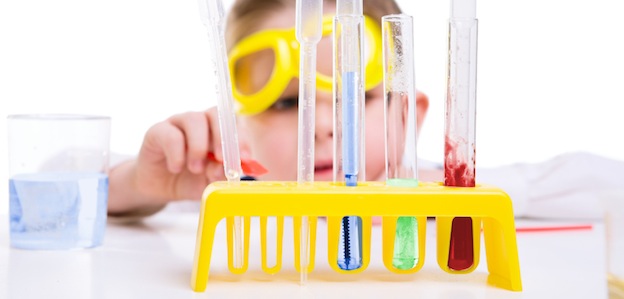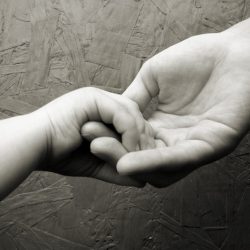SingaporeMotherhood | Baby & Toddler
January 2014
Introducing Your Child to Science

Imagine role-playing life, climbing through a nine metre tall structure to a loft that transports you into a kaleidoscopic dream world, creating experiences with art and nature, discovering STEM with magnetism, light and sound…
Come June this year, children in Singapore will be able to do more of all these at Kids STOP, a science centre for children between 18 months and eight years of age. Housed at the Omni Theatre Building, Kids STOP promises to spark a child’s interest in science through galleries and exhibits that encourage play and hands-on exploration.
[banner][/banner]
Could a one-and-a-half year-old toddler be receptive to science, you ask? Why not?
“Children learn best through play so we planned the various zones and playful activities at Kids STOP such that they are relevant for curious minds and provide lots of opportunities to explore, experiment and experience the world and science around us,” said Associate Professor Lim Tit Meng, Chief Executive of Science Centre Singapore.
Indeed, science does not only belong in the classroom. It encompasses many aspects of life and a child can be exposed to it through everyday activities such as cooking and imaginative play.
“We can introduce science to young children by using their five senses by seeing, touching, smelling, hearing and tasting,” shared pre-school teacher Dewi Rusli, 37. The mother of two boys aged four and seven introduced her children to science by doing experiments with them at home.
“I used to buy magnets when David was a little over one year old. He was so fascinated with them. He carried a magnet everywhere he went to see which objects it was able to attract,” she said.
We asked the science experts at Kids STOP to recommend some experiments that parents can easily do at home with their children. Here are four:
Activity 1: Paint with milk
Fill a dish about half an inch deep with milk. Add a few drops of food colouring to the milk. Now, touch the tip of a toothpick to some soap and dip it into the tray of milk. Watch what happens.
The Science:
Milk is not a homogeneous liquid. It is made of fats and water which donot mix. Soap, however, has an interesting property. One side of a soap molecule is water-loving and the other side is water-hating. When you put soap in, the water in milk is attracted to the water-loving end of soap and the fats are attracted to the water-hating end of soap. With colour in the milk, you can see the milk dance.
Activity 2: Play with your fruits
Is it difficult to get your kids to eat their fruits? This time, play with them. Lay out toothpicks and small firm fruits like grapes, cherries, strawberries, cherry tomatoes etc and build sculptures with them. Sculptures are a good way to reinforce basic geometry as well as engineering skills – With two or more kids, see who can make the tallest/ widest/ largest building and then chomp it down!

Activity 3: Floating fish
Cut a fish out of a sheet of foam – a grocery store tray works well. Float the fish in a dish of water. Now, add a drop of soap to one end of the fish. Watch what happens.
The Science:
Water molecues stick close to one another. This is called surface tension and this allows the fish to stay on top of the water. When soap is added, the water molecules close to the drop of soap are attracted both to the soap and also to the other water molecules, reducing the surface tension on the soapy side. This pulls the fish to the space with higher surface tension.
Activity 4: Grow your own
There is something magical about growing plants from seeds no matter how many times we do it. This time, lets do some hydroponics. Take two Styrofoam trays and poke several holes on one of them. Put the tray with holes on top of that without holes. Place a layer of tissue on top of the upper tray (the one with holes). Scatter some seeds on it. Maker sure that your tissue is kept wet and the seeds will sprout. Seeds that work well include wheat grass, mustard and green beans.
There you go. Four easy experiments to do with your little one at home! But is toddler-age too early to grow an Einstein? After all, science is only taught at Primary level in Singapore, at P3, the year children turn nine. Surely this would be a more logical age to teach the subject? Not necessarily, say the people at Wonderswork, an enrichment centre that “nurtures inventors and entrepreneurs from young”. Here’s how they think teaching science at a young age can help children:
The Early Bird catches the Worm
Parents want to bring out the best out in their child. Introducing science at toddler stage provides the child an early kick-start to gain necessary first-hand experiences and develop basic concepts, influencing early development of cognitive and motor skills.
Enhance Confidence
With this early start, science helps to build self-confidence and confidence in their environment as the child develops. He or she has increased confidence in experimenting with the unknown and exploring the possibilities at a later stage of learning.
Grow a Thinker
Because of the brain’s early reception of science at this stage, the child develops enhanced observation skills, which will help to influence his or her thinking process.
Solve Problems Creatively
With the vast amount of science-related information stored in the young mind, the child learns to view and analyse problems through different angles and perspectives, enabling him or her to think out of the box.
Convinced? Well then, go forth and experiment!
All content from this article, including images, cannot be reproduced without credits or written permission from SingaporeMotherhood.
Follow us on Facebook, Instagram, and Telegram for the latest article and promotion updates.





